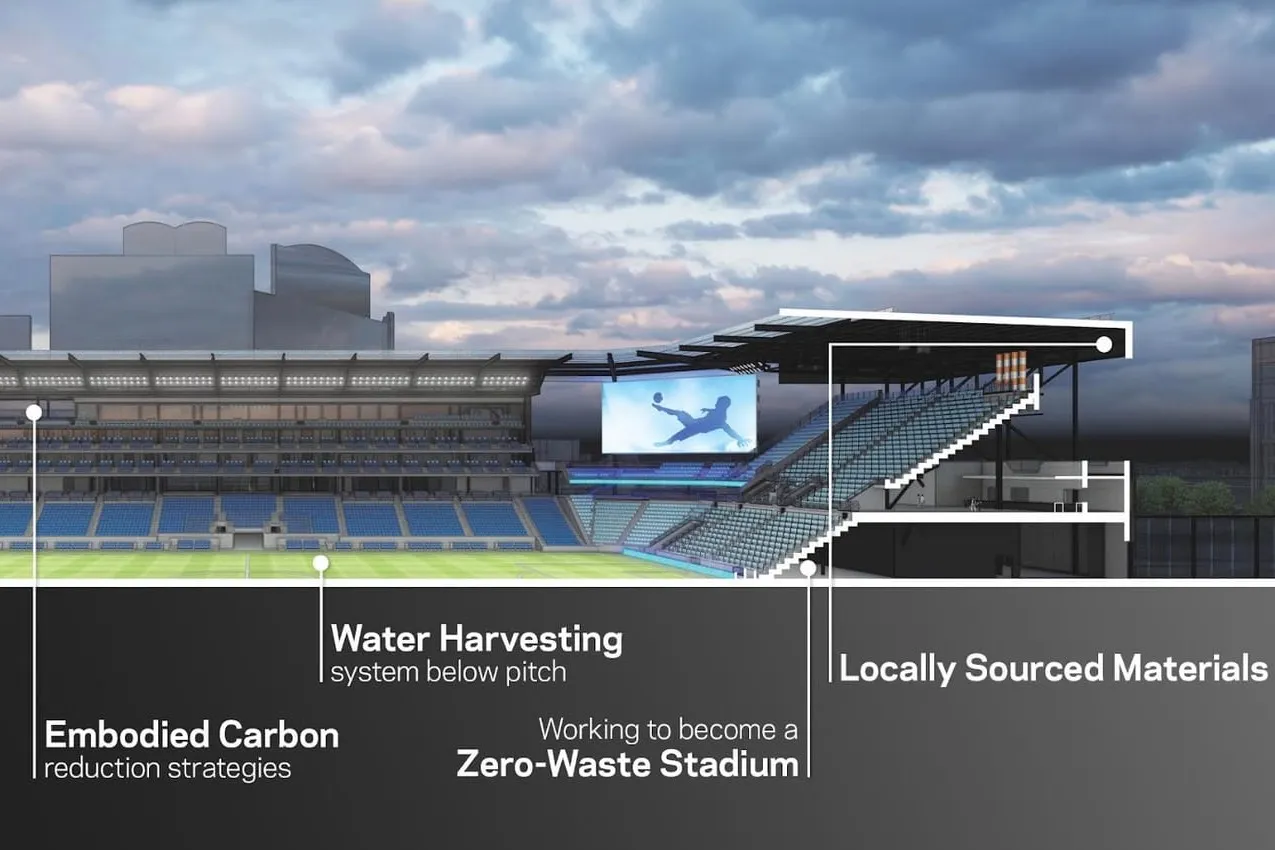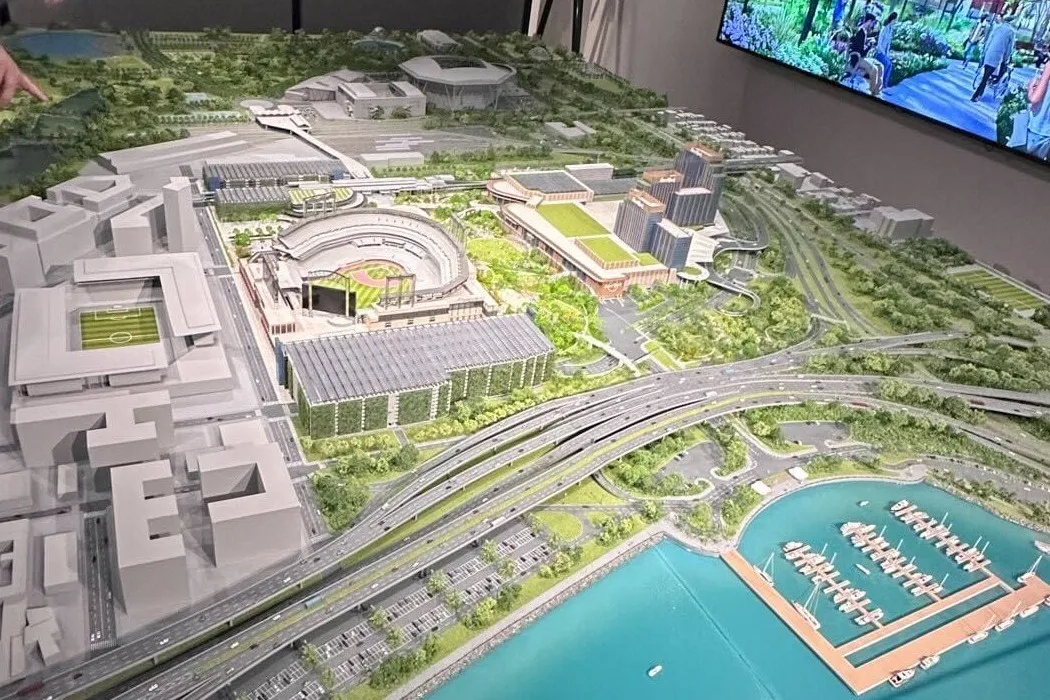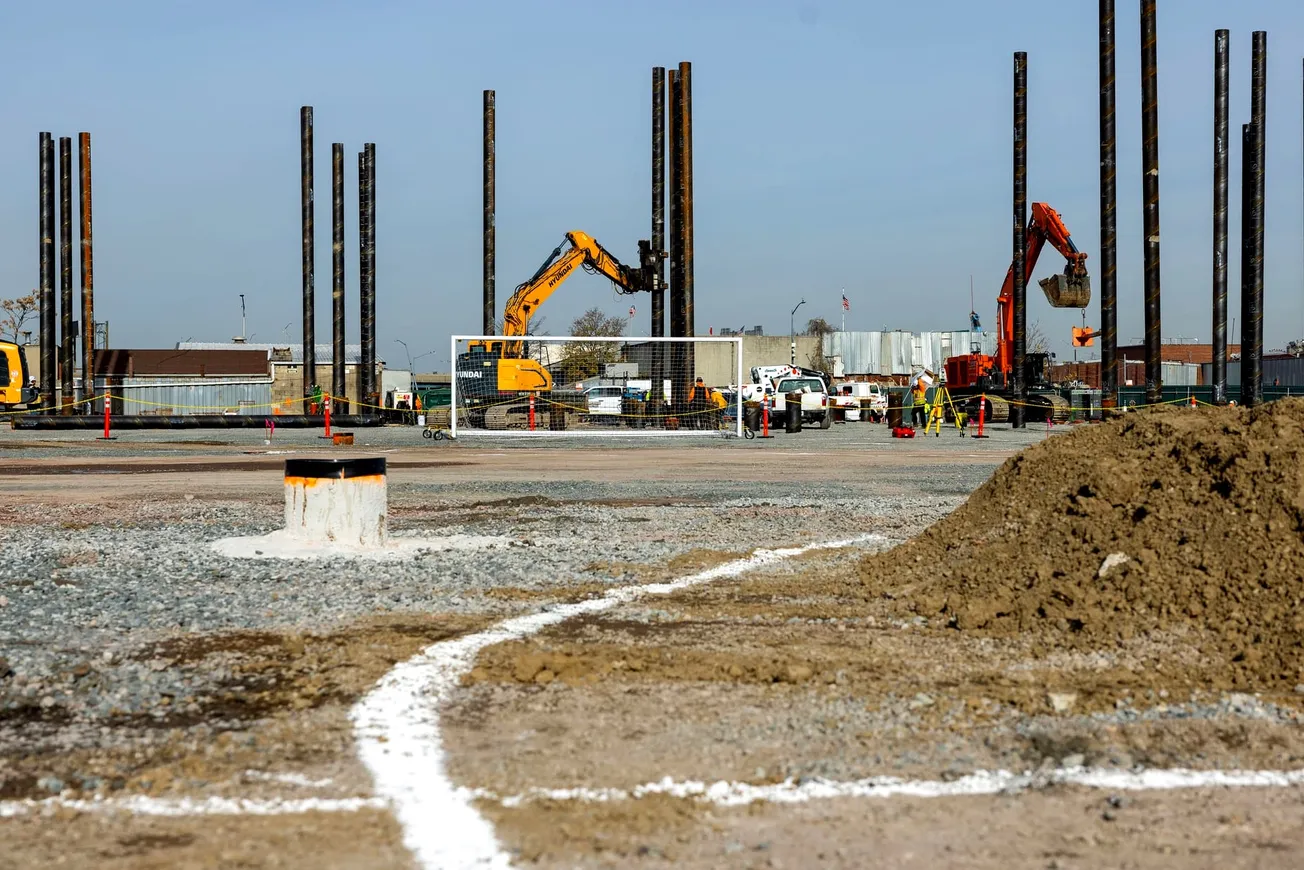When it opens in 2027, the New York City FC soccer stadium in Willets Point, Queens will be the first-ever fully electric venue in Major League Soccer, and the first-ever fully electric pro sports stadium in New York City.
NYCFC announced the all-electric stadium plan as part of a presentation to Queens Community Board 7‘s Land Use committee on the sustainability features that will be built into the new stadium. This came during the first meeting held by the Community Board committee on Wednesday, November 15 to discuss the stadium-involved phase of Willets Point redevelopment.
Willets Point aims for LEED certification
The Willets Point soccer stadium, you may remember, officially enteredNew York City’s uniform land use review procedure, ULURP, one month ago. The current, ongoing phase of the ULURP process is Community Board review, with local Queens Community Board 7 scheduling up to three committee meetings to discuss and form an eventual approval or disapproval of Phase 2 of the planned Willets Point redevelopment, the first of which was held Wednesday, November 15.
NYCFC kicked this part of the ULURP process off by emphasizing all the environmentally-friendly facets of their stadium plans.
Yes, the club that previously brought you a lightning bolt-adorned, bright-orange Volt Kit and a supporters group named after an electrified train rail, is now going all-in on electric power at its new home. An array of solar panels will be installed on the NYCFC stadium’s roof, meant to maximize energy generation. There will also be an emergency backup generator on site, and the club says its stadium will eliminate energy waste through “built-in efficiency” and “intelligent systems.”
The goal is for the stadium to eventually be zero-waste, and the club says it aims to eventually attain LEED certification.
Marrying environmentally-friendly design with massive sports arenas is not new ground for the architectural firm NYCFC are working with to bring their Queens stadium to life. HOK designed Atlanta’s Mercedes-Benz Arena, home to Atlanta United FC, which HOK’s own website refers to as “North America’s Most Sustainable Stadium.” That venue has the designation as the first pro sports venue in the United States to receive “LEED Platinum Certification,” the highest level of the LEED certification system.
The NYCFC stadium is said to be built with locally-sourced construction materials in order to avoid substantial transportation impact on the environment. The club is also setting goals around landfill waste reduction and limiting the stadium’s carbon emissions.
Water conservation a priority
Conserving water looks to be a point of emphasis. Plans call for a water harvesting system to be installed beneath the Willets Point stadium, meant to capture rainwater and re-use it for irrigation purposes. There’s also mention of water-efficient systems, including dry urinals, proximity-controlled taps, reduced water mix taps, and shower heads will help to reduce unnecessary water consumption.
NYCFC CEO Brad Sims is quoted in the team’s release about its stadium sustainability plans as saying, in part, “We’re committed to building a stadium that serves as a model for projects in the future. Through renewable energy, the use of efficient materials, waste reduction and effective compliance, we’re excited to deliver a sustainable home for the club and local community for decades to come.”
All these details on the environmental upsides of the Willets Point stadium were shared at the first of potentially three meetings about the stadium project held by Community Board 7.
Willets Point URLUP ongoing
Members of that group’s leadership are outspoken about wanting their approval of Willets Point Phase 2 to be accompanied by a new police precinct opening in their community, but their approval is also being courted during this phase of ULURP, which gives the board a direct (albeit only advisory) say on the development.
Earlier this week, the president of the New York City and New York State Building and Construction Trades Council, a group that represents union construction workers, published an op-ed titled “With thousands of union careers on the line, NYCFC’s new stadium must move forward.” That piece played up the positive effect on union labor the stadium project will have, saying of the redevelopment, “It is ready for approval, and any delays means standing in the way of creating these family-sustaining career opportunities and bringing more economic stimulus into our communities.”
These new details on the various ways the stadium will reduce its environmental footprint provides a further nudge to Community Board 7 and the rest of the parties that have a say in ULURP, presenting the project’s environmental positives.
This part of Queens is, after all, somewhat infamous for its environmental issues. It’s the same “Valley of Ashes” referenced by F. Scott Fitzgerald in The Great Gatsby, a destination for tons and tons of pollution and environmentally-damaging dumping over decades. As of September, the process to remediate this parcel of land being redeveloped at Willets Point resulted in the removal of over 169,000 tons of toxic soil.









